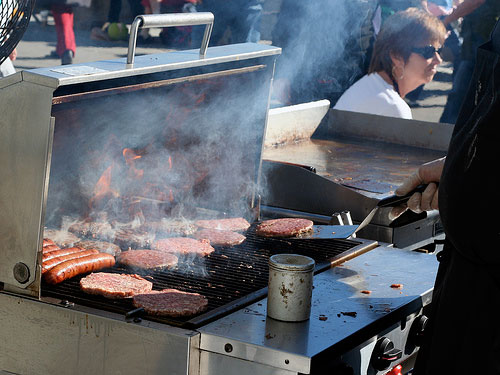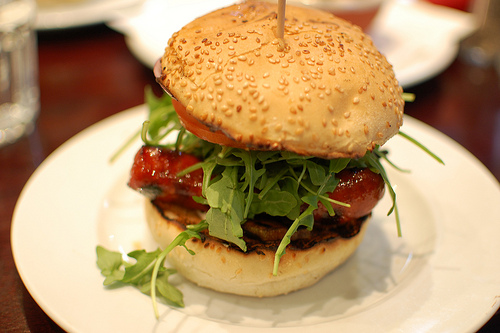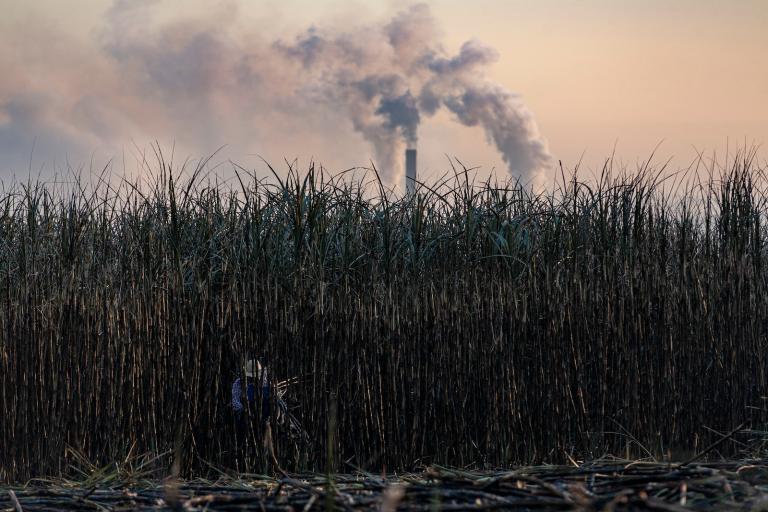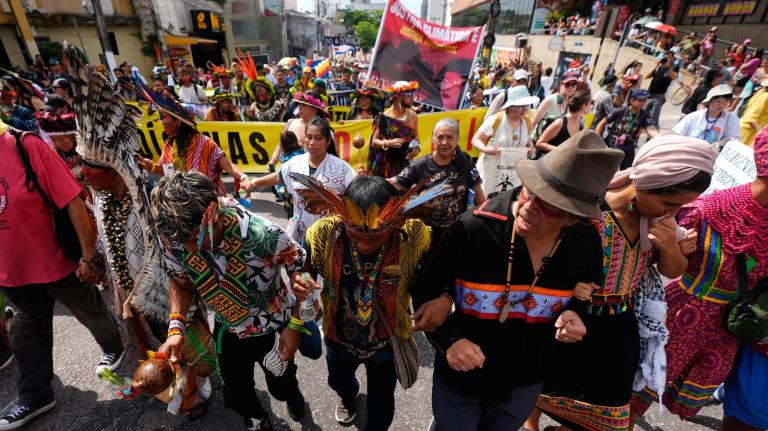 Sizzling good: The Prather Ranch burger stand at San Francisco Ferry Plaza.Photo: Niall KennedyLast Saturday, I found myself at San Francisco’s famous — in some quarters, infamous — Ferry Plaza farmers market.
Sizzling good: The Prather Ranch burger stand at San Francisco Ferry Plaza.Photo: Niall KennedyLast Saturday, I found myself at San Francisco’s famous — in some quarters, infamous — Ferry Plaza farmers market.
Like many visitors, I was stunned by the variety and quality of fruits. Strawberries … in late October? And not just any strawberries — luscious little organic ones that pack more flavor in a single bite that entire mountains of industrial strawberry-like orbs.
On that grey, cool morning, with the Bay Bridge looming in the distance, farmers were hawking things that could never be grown in my neck of the North Carolina woods: pyramids of pomegranates, piles of gorgeous plums, bag loads of almonds and other nuts. Then there was the veritable sea of greens, in a stunning variety of styles (“wild” arugula –really?). Several vendors offered meats and cheeses made from animals raised on pasture. I was flying away that very morning, and bitterly lamented that I couldn’t load up a huge bag of goods and head to someone’s home kitchen.
But you know what? My sadness at not being able to cook from that bounty quickly disappeared, because in addition to its pristine market stands, Ferry Plaza offers a glorious array of fast food.
That’s right — fast food. I’m praising it. Yes, cooking is wonderful, and so is communal eating with family and friends. I do both every chance I get. But there’s something powerful about standing up in a crowded cityscape and eating something simple and delicious that has been cooked before your eyes.
While many people, including me, deplore the rise of regimented, standardized, car-dependent fast food here in the United States, the truth is that dense cities have likely always gotten a huge portion of their sustenance from street vendors. They seemed to have done so even in the ancient Roman world. After studying the material culture of Pompeii for 20 years, the British archaeologist Penelope Allison concluded that formal sit-down dining was pretty rare; the city’s residents generally ate “on the wing” — that is, on the street.
In 19th-century London, most of whose vast working class was too poor to own much cooking equipment, pie and eel shops must have been a revelation. Nothing could be faster — you order, and someone behind the counter slaps a pre-cooked meat pie, a dollop of mashed potatoes, and stewed eel in parsley broth on top. Here’s one, still operating on London’s East End, that started before Mickey D’s Ray Krok was even born — back in 1862.
My point is that fast food isn’t necessarily egregious. Indeed, I would argue that no society can claim to have a robust food culture without having a robust fast-food culture. On a trip to Austria, whose schnitzels and strudels and sacher tortes are celebrated throughout Europe, the most memorable meal I had was at an outdoor sausage stand in central Vienna. I shouldered my way among bankers in €5,000 suits and construction workers for a simple meal of sliced sausage, mustard, bread, and beer: everything simple and perfectly executed. Taken amid the grandeur of Vienna’s architecture and among the variety of its workers, it was a terrific meal.
At that moment, class diversity became my quick marker for assessing whether a particular stand or hole in the wall is any good. It has served me well from Palermo to Mexico City to, yes, San Francisco: When I see all different kinds of people queued up to be served more or less the same thing, I figure it must be pretty damned good.
Even Slow Food in Italy gets the genius of good fast food. I attended the biannual Terra Madre conference in Turin in 2008. Beyond the amazing small bites of cured meat and cheese in the famed Salon de Gusto, my favorite culinary experience of the confab came at a section where they gathered excellent street-food purveyors from across Italy. I rhapsodized about it at the time.
Of course, all of this is in sharp contrast to the brutalist fast-food culture that has risen up since Ray Krok wed standardized burger-and-fries production to the post-war expansion of car ownership. But the corporatized vision of fast food, as embodied by global powerhouses McDonald’s and Yum Foods, represents a mere tick of the clock in the long and mostly proud history of fast food.
In a sense, a culture’s fast food presents a distilled version of its broader food system. If the broader food system is industrialized, geared to profit from selling high volumes of low-quality food, than the resulting fast food is going to present a concentrated form of that. Meet — but please don’t eat — the McDonald’s dollar menu.
But when the broader food system is geared more to quality, flavor, and craftsmanship, you get Vienna’s sausages or Mexico’s glorious tlacoyos. At places like the Ferry Plaza Market, a redeemed vision of fast food is emerging right here in what Eric Schlosser called Fast Food Nation.
So, what did I have for breakfast there? Ray Krok would have been proud. I had a cheeseburger from Prather Ranch, a grower of grass-fed beef. It was glorious.



